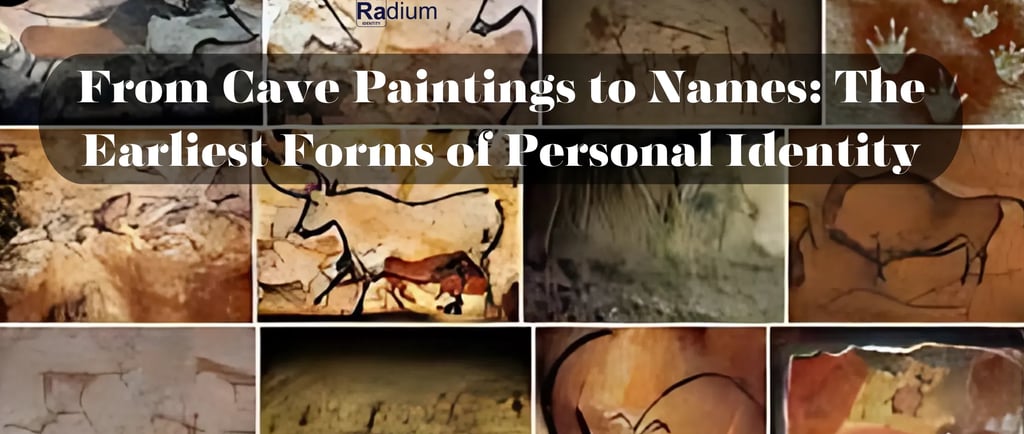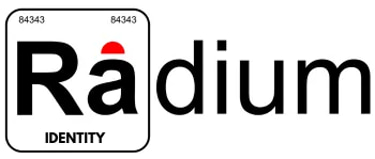From Cave Paintings to Names: The Earliest Forms of Personal Identity
The idea of personal identity has transformed itself in various phases of history. Earliest forms were found even in the era of prehistoric peoples. Cave paintings especially give a wonderful insight into how the early people began to express and identify themselves.
Shubhanshi
3/1/20253 min read


The idea of personal identity has transformed itself in various phases of history. Earliest forms were found even in the era of prehistoric peoples. Cave paintings especially give a wonderful insight into how the early people began to express and identify themselves.
The Origins of Art and Identity
Cave paintings represent perhaps one of the oldest yet evidence of human artistic expression, dating possibly tens of thousands of years. These cave paintings all over the world provide information on how early man lived, believed and identified. For example, the Maltraviso cavity in the Spain region has a red -hand -script, estimated to have been painted more than 64,000 years ago by a Neanderthal. Similarly, the Leang cave in Indonesia has a painting of a Sulawesi Warty Pig, dating back 45,500 years. These works of art not only describe the world and daily life of early hominas, but also depict their identity and how they belong to this world.
Cave paintings, as old as 30,000 years, are among the oldest known human expressions. Websites such as Chauvet Cave, France provide evidence of depictions of animal and handshake, pointing to the evolving feeling of myself and belonging in former people. These works of art may have served ritualistic or communicative purposes, and reflect the identity and belief of their creators.
Symbolism and Identity in Cave Art
Cave art is frequently marked both with symbolic drawings and motifs that could have reflected, viewable, or shared identity. For instance, hand stencils are believed to represent ownership, identity, or other manifestations of self-representation. These handprints can be seen as the initial forms of individual signatures, directing the artist with their work. In addition, the depiction of animals and hunting scenes may work for both practical and symbolic purposes, which reflect the importance of these activities in early human society.
The Role of Art in Social Cohesion and Identity
Art in prehistoric times likely played a crucial role in social cohesion and identity formation. Common artistic endeavours could (with unfortunate societal ties) reinforce interpersonal loyalty and engender a feeling of togetherness in early human groups. In the case of, say, cave paintings, it may have been a communal task that fostered social bonds and shared identity. In addition, these artworks may have been involved in ritualistic practices or spiritual rites and rites of passage, thereby strengthening identity membership of the group and their relationship to the world around them.
The Evolution of Personal Identity
Getting more complex with the expression of identity, as societies became more complex. The creation of portable art, such as small sculptures and ornament, became more common during the Peleolithic period. Artifactions, which are accustomed from one atmosphere to another, can be used as personal identifiers or as markers of social status. For example, "Venus" idols, with their YL -made female diagrams, may be a symbol of reproduction or other social concepts.
Jewelry and Personal Adornments
About 100,000 years ago, people began to adorn themselves with jewelry (eg pearls) as symbols of personal identity. Elements found from regions, such as South Africa, Israel and Algeria, indicate that these decorations expressed information about the wealth, family status or identity of the person.
The Emergence of Personal Names
Introducing personal names as a simple identifier with the evolution of the language, made single names as basic identifiers. Among the ancient Egyptians, the name, that is, "Ren", constituted an integral part of the person's identification and survival after death. The names are believed to incorporate a person's essence, and preserving someone's name was crucial to guaranteeing their legacy and after death.
Advancements in Identity Verification
As societies evolved, so did methods of identity verification. The creation of passports in 15th-century England provided a standardized means of identifying individuals in foreign lands. Even at the turn of the 20th century, with the introduction of the individual identification number (лади), identity validation became more and more simple, and opened the door to contemporary identity systems.
Conclusion
Cave paintings crafted by ancient humans and other art can be found in the oldest personal identity forms. These expressions, whether by hand stencils, animal pictures or portable art, provide individuals and communities a tool to emphasize their identity and connect their environment and to each other. Along with the developmental path of human society, the methods of identity expression developed, resulting in the complex systems of personal identity we see today.
Solutions
Advanced identity verification and KYC services.
Quick Access
Access
© 2025. All rights reserved.
